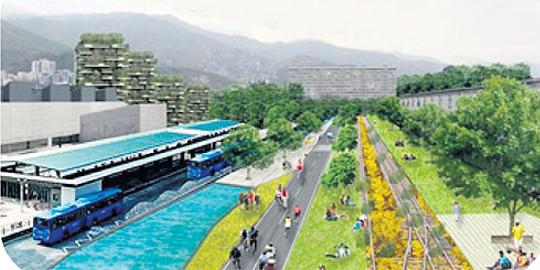
Plans for growth in Cali, Colombia’s third largest city, include environmental, social and infrastructure that will require some US$5 billion dollars.
But the Alcaldia de Cali (city government) has a plan. Fundingfor the various megaprojects will come under the Asociación Público Privada (APP) – Public Priavte Partnership program – which allows government agencies work with private investors to develop design and construction of infrastructure.
According to the Cali’s mayor, Rodrigo Guerrero, the ideas of fusing public and private investament will facilitate growth that would otherwise take 10 years or more.
The plans include developing a “digital city”, a green corridor through which vehicles are moved friendly to the environmnt, the construction of 40.000 housing solutions near a former waste dump and a perimeter ring that connects the city of Cali with neighbouring municipalities.
The plan has already attracted private investment that would help the city raise the US$5 billion to carry out all the work, according to Guerrero.
One of the most ambitious is the Ecocuidad Navarro (Ecocity Navarro) in the southeast part of Cali, where some 40.000 single and two storey homes will be built. Located near the Navarro landfill that was closed four years ago, the development will include shopping, self-sustaining famrs, solar panels to take advantage of abundant sunglight and a power generation system from the methand gas emanating from the landfill site.
This project caught th eattnetion of a private Enlgish investment fund that has plans to enter the Latin American market. According to Oscar Parto, director of City Planning, the fund would be investing up to US$2 billion dollars and will be spending the rest of this year on palns and designs.
Other plans include the use of the railway lans that crosses the city from north to south, developing a massive rail transit line along the 15 kilometre corridor. According to Metrocali, which currently operates the massive bus transit system, it would take some US$140 million dollars.
The development of bicycle paths and mroe parts are all part of the “green city” plans for Cali.
